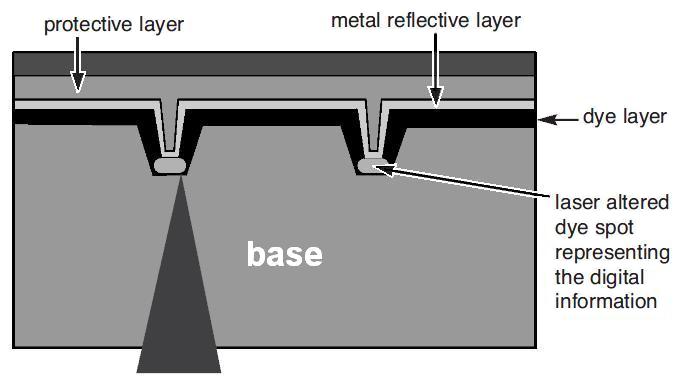CD-R
Introduction
CD-R is a "write once" technology that can be used in both CD-R and CD-RW recorders, and read by nearly any computer CD drive or audio CD player.
In a CD-R, the recording layer is made with organic dyes — greenish cyanine dye, golden phthalocyanine dye, or silver-blue azo dye, depending on the disc manufacturer. While there are differences among the dyes, the differences are probably most important to chemists, not to CD-R users.
The laser of your CD-R/CD-RW drive heats the dye to a temperature of about 200° C, irreversibly melting a pitted pattern into the recording layer. A plastic layer alongside the dye expands into the newly available space, creating a pit pattern similar to that of a conventional CD. Your CD player reads this highly reflective pattern for playback. Because the plastic layer melts into the dye layer to set the pattern, CD-R discs cannot be re-recorded.
Layers of CD-R
The following diagram provides a cross-section of a CD-R:
Image source
Joe Iraci. Longevity of Recordable CDs and DVDs - Canadian Conservation Institute (CCI) Notes 19/1. Ottawa: Minister of Public Works and Government Services Canada (2010).

